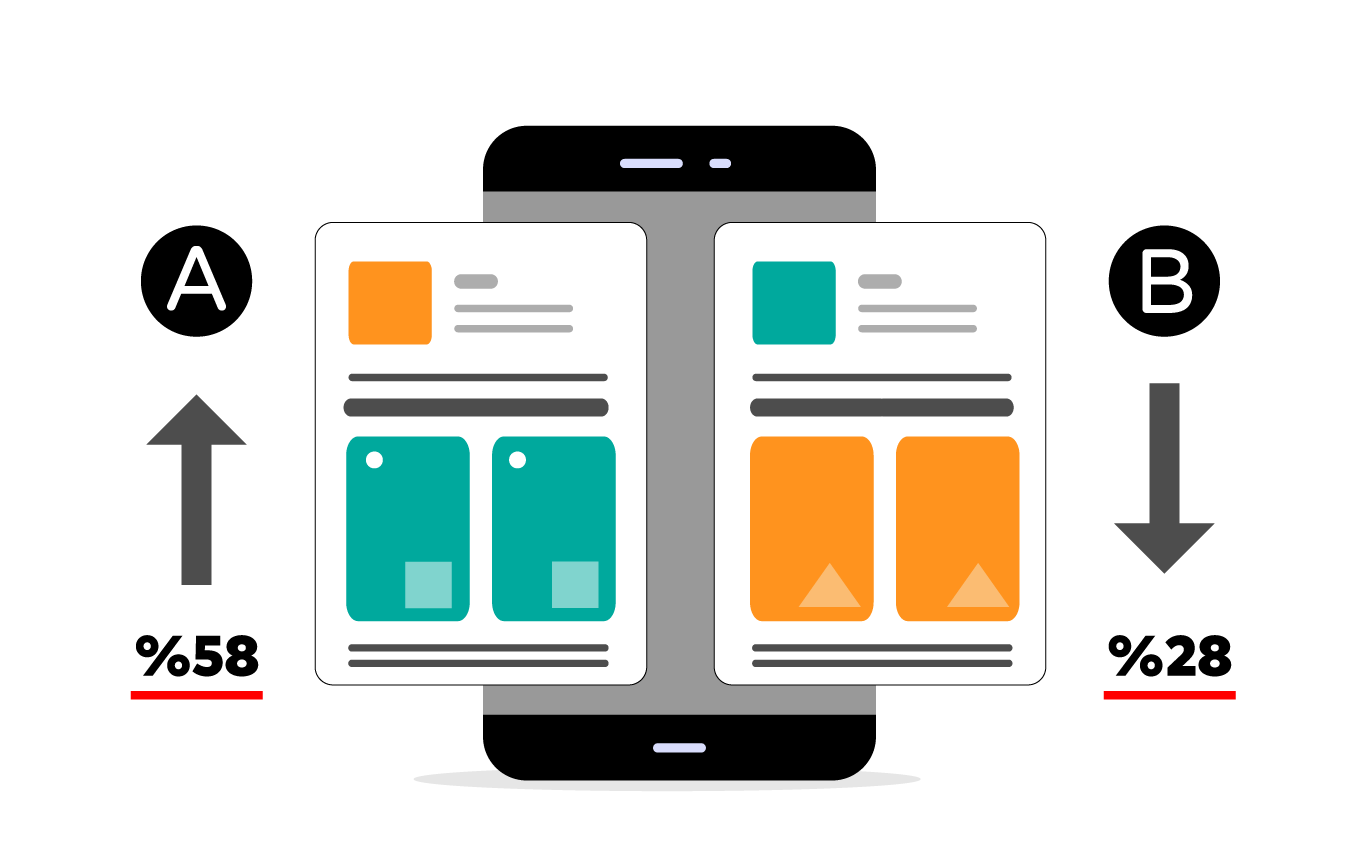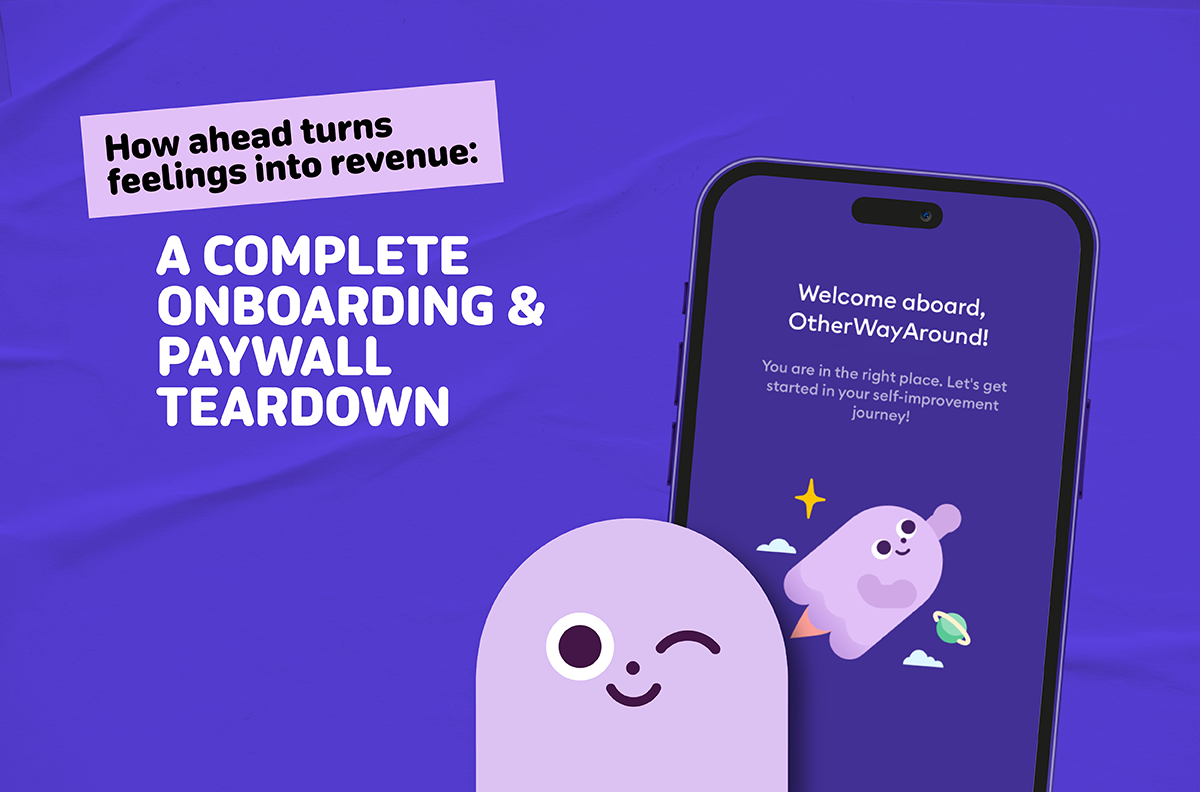The Power of A/B Testing in App Store Marketing
Don't allow 'Optimize' to lose its meaning! Embrace A/B Testing for data-driven decisions that will boost your conversions.

You've probably heard it a hundred times: 'Optimize, optimize, optimize.' But what does that really mean? Well, it's all about unleashing the potential of even the smallest change in your app or marketing efforts. A single word in your ad copy, the color of a button on your website, or the placement of a call-to-action can work magic. And the secret behind making these tweaks work? A/B testing.
What is A/B testing?
A/B testing is the art of pitting two or more versions against each other to see which performs better. It helps you make informed decisions, backed by data, not just gut feeling.
Let's say you've poured your heart and soul into an ad campaign targeting the 18-30 age group of a male audience in the U.S. But you're torn between two App Store creatives:
- One with bold visuals
- One with calming visuals
Which one will resonate better? Instead of a coin toss, you A/B test them. You expose a portion of your audience to each version and let the metrics tell the tale.
Perks of A/B testing
Sure, A/B testing for mobile apps a bit of a mountain to climb. You have to grapple with technical intricacies, manage the delicate dance between Android and iOS platforms. You need to master all while ensuring your tests and data turns into something meaningful.
But the view from the top is worth it!

Once you crack A/B testing, the insights and improvements it brings will help you boost your conversions drastically.
With A/B testing, you can:
Increase User Engagement: By adjusting how your app looks and feels (UI and UX), you can see improvements in session time, user engagement, retention rates, and the overall lifetime value (LTV).
Personalize for Different Users: It might not just be about your App Store creative, but also the audience seeing it. Experiment with diverse audiences and guarantee that each segment receives content that resonates with their preferences.
Uncover User Behavior: By testing how users react to component variations, you can gain valuable insights. For instance the background color of your App Store creative, the language used in your ad copy, the placement of a call-to-action (CTA), or even the position of a button within your visual can boost your conversions by 15-40%.
Understand the Impact of a New Feature: By showcasing a new feature in one App Store creative while excluding it from another, you can gain a clear understanding of its impact on your app marketing objectives.
Validate Traffic Channels: Let's face it, each platform has its own rules. What's a hit on Facebook might fall flat on TikTok. You can put your App Store creative to the test without changing a thing and just tweak the channels. Based on the results, you can identify your marketing channels to shift your focus on them and boost ROAS.
How to A/B Test in the Right Way
Have a gameplan. Ask yourself:
What should be tested?
Who is the target audience?
What is the expected outcome of the test?
How to proceed if your hypothesis is proven/disproven?

Formulate A Hypothesis: Decide what you want to test and what you're hoping to achieve. For example, you could hypothesize that changing the app icon will lead to an increase in click-through rates.
Create Variations: Create and present different versions of the element you're testing to a control group. This could be your current app icon versus a one with a bolder design. Then, closely observe and compare how each group responds to the different variants.
Analyze the Results: Once you've collected enough data, compare the outcomes of each version. Did Version A, bring more clicks compared to Version B? Let the numbers guide your decision-making.
Implement the Winner: If one version clearly outperformed the other, implement the winning version across the board. But remember that optimization isn't a one-time event. Keep monitoring results and keep experimenting.
4 Tips to Master The Psychology of A/B Testing
Confirmation Bias
People tend to search for information that confirms their existing beliefs. This phenomenon is known as confirmation bias.
How to apply this in your A/B testing?
Understand the vocabulary of your audience. Use these words in your product pages and in your ad copies to immediately grab their attention. To find these words, you can leverage search volumes of keywords, do customer interviews and eventually put them in test.
Availability Heuristic
When people estimate the probability of an event, they often rely on easily accessible examples. This mental shortcut can lead to a narrowed perspective, overlooking a wider range of possibilities.
How to apply this in your A/B testing?
Showcase positive reviews and high ratings prominently in your App Store creatives or screenshots. Test these elements to discover which approach resonates better with your audience and drives a higher conversion rate.
Anchoring bias
Have you ever fixated on a specific piece of information and let it influence your decisions? This cognitive bias is called anchoring bias. It's when you latch onto a particular price point and let it shape your value perception.
How to apply this in your A/B testing?
Let’s say you're managing a subscription app. You can experiment with different price points and their order. Then observe how these variations impact users' decisions.
Loss Aversion Bias
People tend to feel the impact of a loss more intensely than the joy of a gain. In other words, the fear of losing something often outweighs the potential of gaining something.
How to apply this in your A/B testing?
Offer a risk-free trial option. Create an App Store creative version that highlights the opportunity to try your app without any obligations. By addressing users' aversion to loss, you're encouraging them to take the step and try your offering with confidence.
As said right in the beginning, A/B testing is a mountain to climb but the view worths it. Without the necessary foundation to execute tests, collect and manage the data, it can easily turn into a waste of time and money.
You can talk to our experts about your app growth and challenges to overcome for free of charge.
See the loss of aversion?
If that worked on you, don't hesitate. Schedule a call with us today!
And if it didn't, still schedule a call with us today.
After all, the first step towards success is just a click away!


.png)
